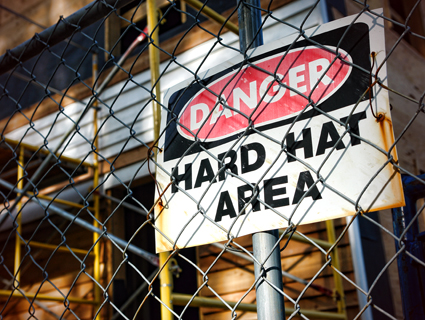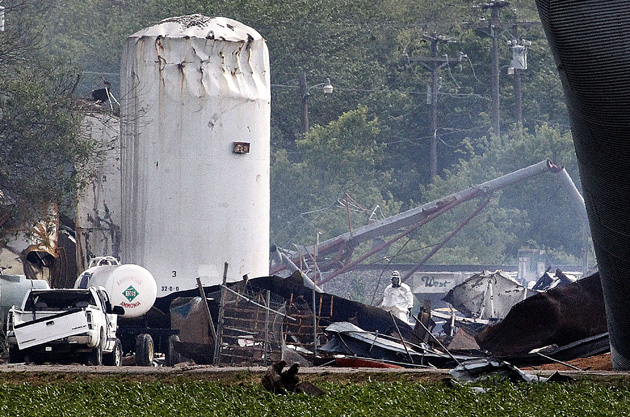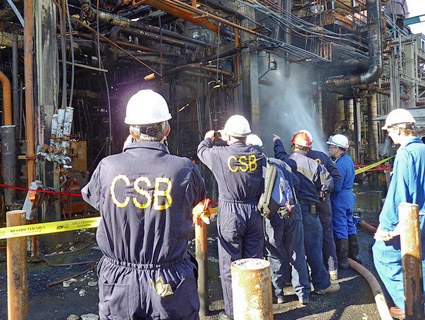
<a href="http://www.shutterstock.com/pic.mhtml?id=77002051">Olivier</a>/Shutterstock
Workplaces dangers have been in the news more than usual lately, from the deadly explosion at the West, Texas, fertilizer plant to the garment factory collapse in Bangladesh, where the death toll is now more than 700. In light of the latter, there is the temptation to say that what happened in Texas was an anomaly, and that conditions in US factories are so much better than in the developing world. But not so fast: A new report from the American Federation of Labor and Congress of Industrial Organizations, the nation’s largest affiliation of unions, shows that 4,693 people died the job in the US in 2011 (the most recent year for which the Bureau of Labor Statistics has released figures).
According to the “Death on the Job” report, the most dangerous occupations in the US in 2011 were in the agriculture, forestry, fishing, and hunting sectors; mining and transportation were also near the top of the list. The average fatality rate across all occupations was 3.5 deaths per 100,000 workers.
While the numbers are much lower than they were back in 1970, when 13,800 employees died on the job, the AFL-CIO notes that that fatality rate has not improved since 2008. And another estimated 50,000 workers die each year from work-related diseases like cancers and lung ailments.
Part of the issue, the AFL-CIO concludes, is that the Occupational Safety and Health Administration (OSHA) remains underfunded and understaffed, and that penalties are too low to deter violations:
Because of the underfunding, federal OSHA inspectors can only inspect workplaces once every 131 years on average, and state OSHA inspectors would take 76 years to inspect all workplaces.
OSHA penalties are too low to be taken seriously, let alone provide deterrence. The average penalty is only $2,156 for a serious federal health and safety violation, and only $974 for a state violation. Even in cases involving worker fatalities, the median total penalty was a paltry $5,175 for federal OSHA and $4,200 for the OSHA state plans. By contrast, property damage valued between $300 and $10,000 in the state of Illinois is considered a Class 4 felony and can carry a prison sentence of 1 to 3 years and a fine of up to $25,000.
Criminal penalties under OSHA are also weak. While there were 320 criminal enforcement cases initiated under federal environmental laws and 231 defendants charged in FY 2012, only 84 cases related to worker deaths have been prosecuted since 1970.
Read the full report here. Also be sure to check out the Center for Public Integrity’s reporting on workplace safety in the chemical, steel, and fishing industries.















